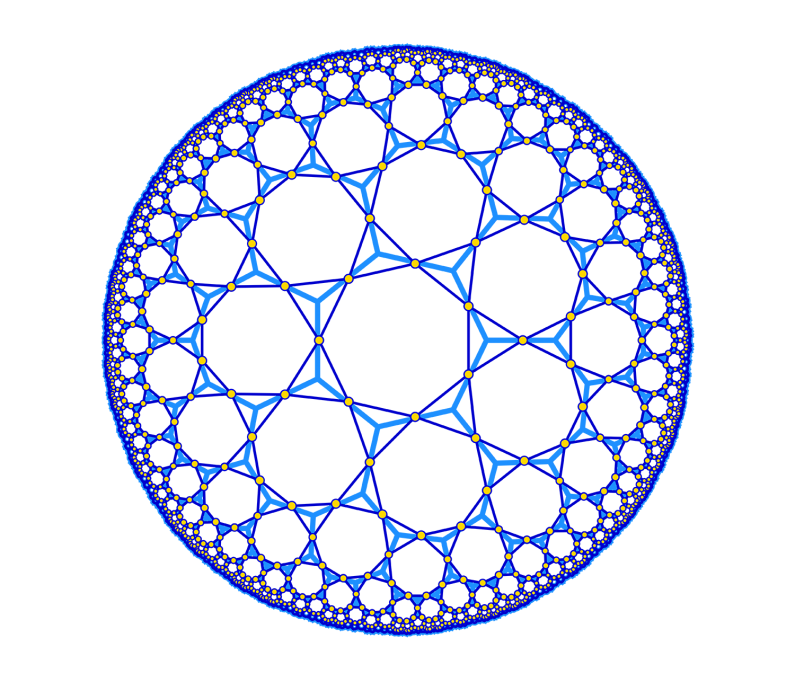
Hyperbolic Poincare Projection
The field of circuit QED has emerged as a rich platform for both quantum computation and quantum simulation. Lattices of coplanar waveguide (CPW) resonators realize artificial photonic materials in the tight-binding limit. Combined with strong qubit-photon interactions, these systems can be used to study dynamical phase transitions, many-body phenomena, and spin models in driven-dissipative systems. These waveguide cavities are uniquely deformable and can produce lattices and networks which cannot readily be obtained in other systems, including periodic lattices in a hyperbolic space of constant negative curvature, and the one-dimensional nature of CPW resonators leads to degenerate flat bands. In our lab, we build experimental implementations of these systems using superconducting circuits.
Postdoc and graduate student positions available! Send email to: akollar@umd.edu
New Protocol Demonstrates and Verifies Quantum Speedups in a Jiffy
Researchers at JQI and the University of Maryland (UMD) have discovered a new way to quickly check the work of a quantum computer. They proposed a novel method to both demonstrate a quantum device’s problem-solving power and verify that it didn’t make a mistake. They described their protocol in an article published March 5, 2025, in the journal PRX Quantum.
arXiv preprint: Autonomous Stabilization of Floquet States
Floquet engineering, in which the properties of the system are qualitatively modified by strong periodic driving, provides a route to realizing new kinds of quantum systems. However, a Floquet-engineered Hamiltonian is always accompanied by unwanted heating.
New Design Packs Two Qubits into One Superconducting Junction
Quantum computers are the basis of a growing industry. However, their technology isn’t standardized yet, and researchers are still studying the physics that goes into quantum devices. Even the most basic building blocks of a quantum computer—qubits—are still an active research topic. In an article in the journal Physical Review A, JQI researchers proposed a way to use the physics of superconducting junctions to let each function as more than one qubit.